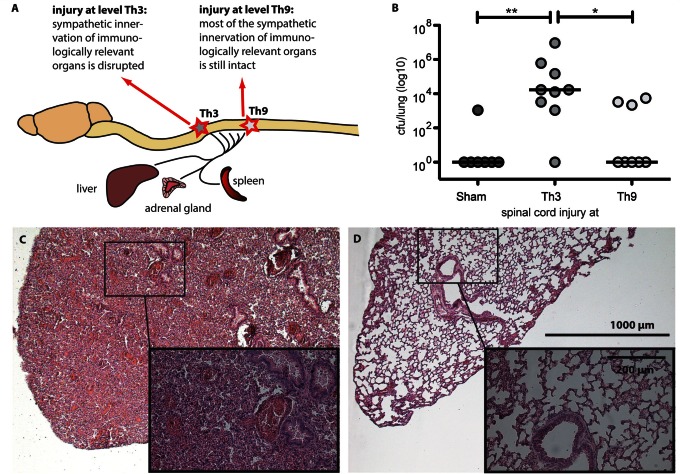Figure 3.
Differential sympathetic deafferentation level determines infection susceptibility. (A) We assessed the infection susceptibility after Th3-SCI and Th9-SCI compared to sham operated animals differing in terms of sympathetic decentralization. (B) The elevated bacterial load in the lung 24 h after inoculation demonstrated an increased susceptibility for bacterial infection in SCI animals (11 of 17, 65 %) compared to sham animals (1 of 7, 14%). Th3 level SCI (eight of nine, 89%) triggered a significantly elevated susceptibility compared to Th9 level SCI (three of eight, 38%). Besides obvious motor and sensory paralysis SCI induces a functional SCI-IDS (‘immune paralysis’) causally relevant for clinical prevalent infections. Lines indicate median. Kruskal-Wallis analysis with Dunn’s post-test, *P < 0.05, **P < 0.01. (C) Haematoxylin and eosin staining of lung tissue from a Th3-injured mouse within the first 24 h after infection, demonstrating histopathological hallmarks of human pneumonia such as massive infiltration of immune cells and oedema formation. (D) Tissue of uninjured, uninfected mouse for comparison.

